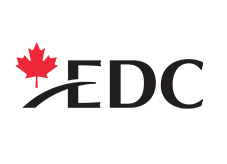Your investor’s business due diligence process in detail
The due diligence process consists of three main parts:
- Screening due diligence
- Business due diligence
- Legal due diligence
Each investor may have a specific process, but typically it involves reviewing the management team, the market potential, the product or service (and the need it meets) and the business model.
An investor’s management review in due diligence
The management team is the most important aspect of the evaluation and the opportunity. The investor is continually evaluating you during all of the formal and informal interactions to make sure that you have what it takes to make the venture a success. The investor will request a list of references to contact and learn more about your background and confirm that your team deserves to be backed financially. They will also develop an understanding of some of the gaps in the management team. The investor may earmark investment funding to add key hires to fill these gaps. The investor will also assess the quality of others around your company, including advisors, consultants, other investors, directors, and legal and accounting firms.
Investors may ask:
- Who are the founders and what are their backgrounds?
- Do they have relevant experience?
- How well do the individual members function as a team?
- Do they have a track record of success?
- What critical resources do they have access to?
- How well do they evaluate risk?
- Are they detail oriented?
- Do they exhibit a capacity for sustained effort?
- How flexible is the management team? How well does the team adapt to a changing environment?
Market review
Most venture capital (VC) deals are investments in opportunities that address a pain point in a large high growth market. The investor will dig into the size, growth rate and competition in the marketplace. Make sure that you understand your competition and can clearly articulate how your product or service is differentiated from the competition.
Investors may ask:
- Who are the users of the product and how many are there?
- What are the drivers that are fueling the growth?
- How is the company positioned against competitive threats?
- Describe the competition.
- Are the customers, suppliers and/or competition fragmented?
- Are there attractive substitutes?
- What regulations govern this market space?
- What are the barriers to entry?
- What is the distribution channel and who controls it?
- What are the market boundaries?
Due diligence and product/service review
Key questions will include “What is the customer problem being solved?” and “Can the problem be solved profitably?” The evaluation will likely include a consultation with current or potential customers and partners.
Investor’ questions may include:
- What customer problem is being solved?
- What unique technology and/or knowledge create value for the customer?
- Why is this product or service superior to the competition?
- Are there any strategic relationships?
- Does this product exhibit scalability?
- What are the barriers to entry? What is the Intellectual Property protection?
Business model review
The investor will closely examine how the company will make money and how it will operate over time.
Specific questions may include:
- How will the company sell its product or services?
- How will the customer perceive value?
- What is the business case for your customers to adopt your product or service? What is the ROI for your customer?
- Are there comparable companies to benchmark?
- Which key market influencers must the company target?
- What are the financial requirements—capital investment, cash?
- Is the business model scalable?
- What is the potential for recurring revenue?
- What are the anticipated margins?
- What is the exit strategy? Is it feasible?
Due diligence checklist:
References
Camp, J. (2002). Venture Capital Due Diligence: A Guide to Making Smart Investment Choices and Increasing Your Portfolio Returns. New York: John Wiley & Sons.
Center for Private Equity and Entrepreneurship. Accessed April 9, 2009, from http://mba.tuck.dartmouth.edu/pecenter/research/pdfs/due_diligence.pdf.

